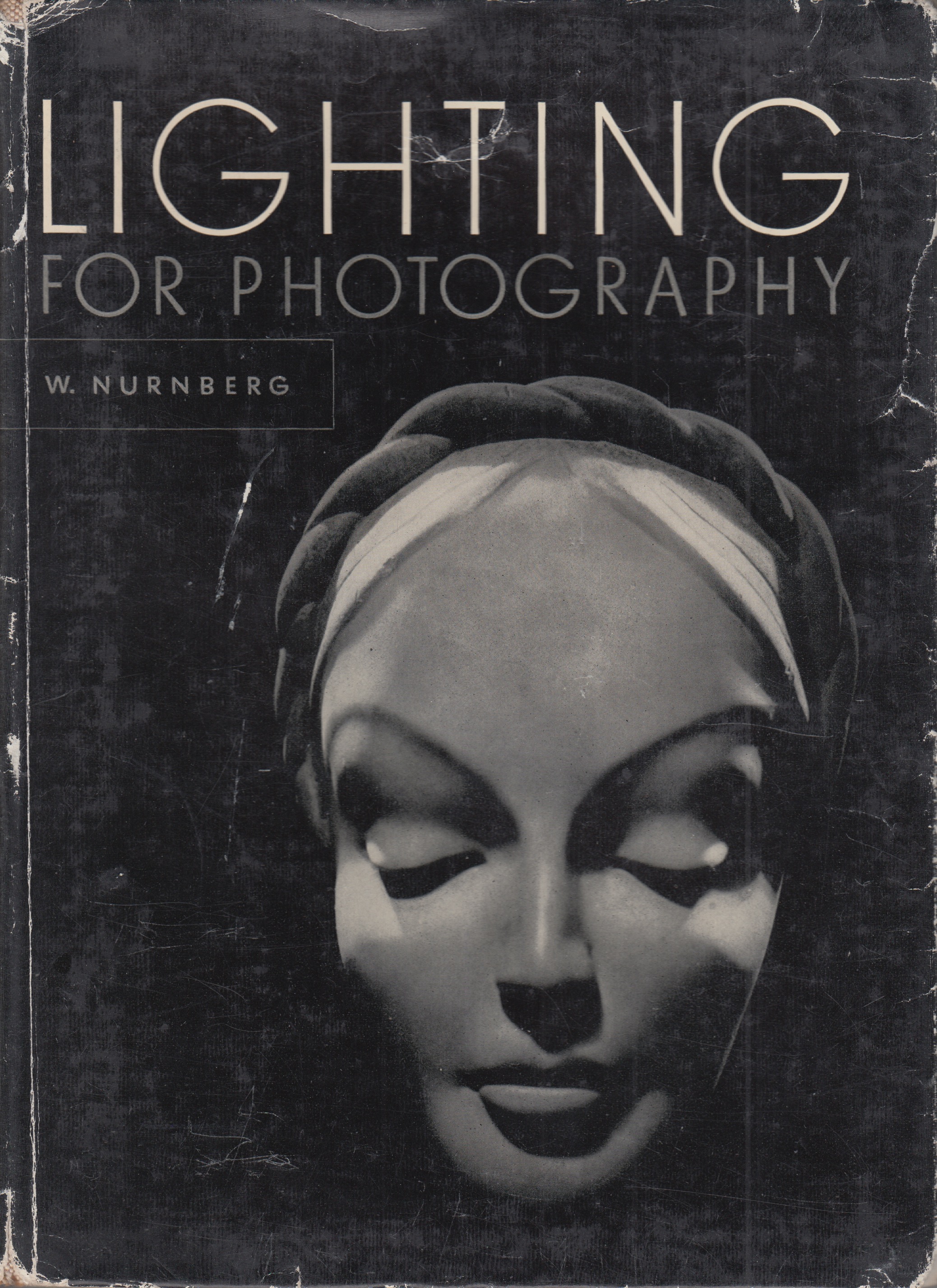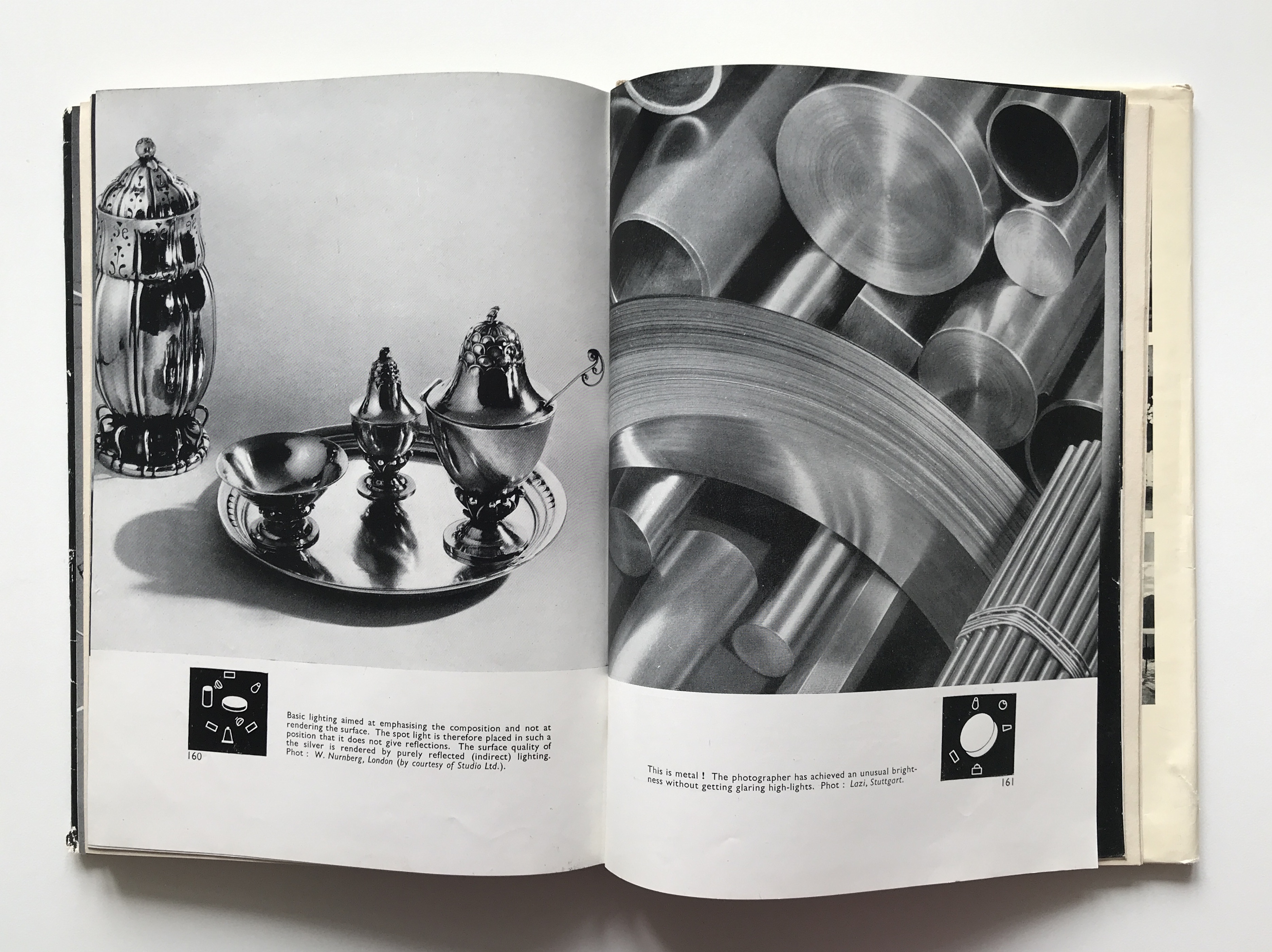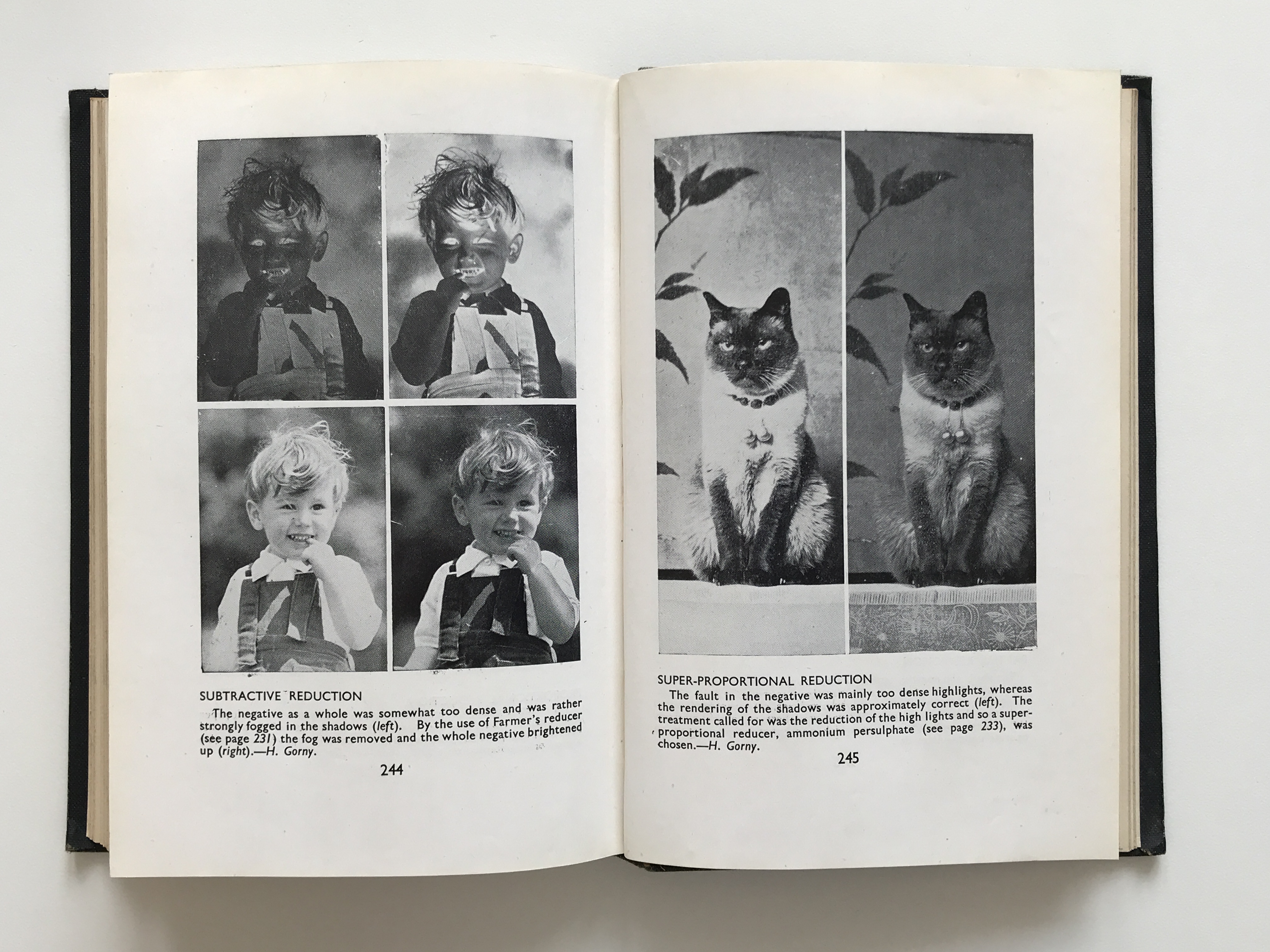Archive
Lighting for Photography. Means and Methods
- Photo guideBook
- Lighting for Photography. Means and Methods
Word Count: 6
- Walter Nurnberg
- 1940
- 1940
Focal Press, 31 Fitzroy Square, Fitzrovia, London W1.
- London (GB)
Lighting for Photography from 1940 by the émigré photographer Walter Nurnberg was one of a number of successful photo guides produced by Andor Kraszna-Krausz’s Focal Press publishing house.
Word Count: 28

Walter Nurnberg. Lighting for Photography. Means and Methods. Focal Press, 1942, 2nd edition, cover (Photo: Private Archive). 
Walter Nurnberg. Lighting for Photography. Means and Methods. Focal Press, 1942, 2nd edition, pp. 94–95 (Photo: Private Archive). 
Walter Nurnberg. Lighting for Photography. Means and Methods. Focal Press, 1942, 2nd edition, pp. 160–161 (Photo: Private Archive). 
Walter Nurnberg. Lighting for Photography. Means and Methods. Focal Press, 1942, 2nd edition, pp. 244–245 (Photo: Private Archive). Doering, W.H. Life-like Portaiture: With your Camera. Focal Press, 1938.
Dorner, Jane. “The Immigrants. Andor Kraszna-Krausz: Pioneering Publisher in Photography.” Logos, vol. 15, no. 3, 2004, pp. 118–125. Brill, doi: https://doi.org/10.2959/logo.2004.15.3.118. Accessed 23 March 2021.
Dorner, Jane. “Andor Kraszna-Krausz: Pioneering Publisher in Photography.” Immigrant Publishers. The Impact of Expatriate Publishers in Britain and America in the 20th Century, edited by Richard Abel and Gordon Graham, Transaction Publishers, 2009, pp. 99–110. Taylor & Francis, doi: https://doi.org/10.4324/9780203789087. Accessed 24 March 2021.
Halwani, Miriam. “Fotografie lesen. Zur Geschichte des Wilhelm Knapp Verlags.“ Fotogeschichte, vol. 28, no. 110, Winter 2008, pp. 23–34.
Kraszna-Krausz, Andor, editor. Immortal Portraits. Selected and commented by Alex Strasser, Focal Press, 1941.
Kraszna-Krausz, Andor. “The Cavalcade of Camera Careers.” Photography as a Career. Survey of the Present and Guide to the Future, edited by Andor Kraszna-Krausz, Focal Press, 1944, pp. 5–10.
Kraszna-Krausz, Andor, editor. Photography as a Career. Survey of the Present and Guide to the Future. Focal Press, 1944.
Nurnberg, Walter. Lighting for Photography. Means and Methods. Focal Press, 1940.
Nurnberg, Walter. Lighting for Portraiture. Technique and Application. Focal Press, 1948.
Osman, Colin. “Der Einfluß deutscher Fotografen im Exil auf die britische Pressefotografie.” Kunst im Exil in Großbritannien 1933–1945, exh. cat. Neue Gesellschaft für bildende Kunst, Berlin, 1986, pp. 83–87.
Smith, Edwin. Phototips on Cats and Dogs. Not for Beginners Only. Focal Press, 1938.
Strasser, Alex. A Good Picture Every Time. Focal Press, 1938.
Strasser, Alex. Snaps of Children and How to Take Them. Focal Press, 1938.
Strasser, Alex. All about the right moment in action photography. Focal Press, 1940.
Strasser, Alex, editor. Victorian Photography. Being an Album of Yesterday’s Camera Work. Focal Press, 1942.
Ward, John. “The Walter Nurnberg photograph collection at the National Museum of Photography, Film & Television, Bradford.” Presenting Pictures, edited by Bernard Finn, NMSI Trading Ltd, 2004, pp. 146–156.
Wiegand, Thomas. “Photographieren mit Lachen leicht zu lernen! Ratgeberliteratur für Fotografen und Fotoamateure.” Autopsie. Deutschsprachige Fotobücher 1918 bis 1945, vol. 1, edited by Manfred Heiting and Roland Jaeger, Steidl, 2012, pp. 46–71.
Wild, James L. “Distinguished Photographer’s Industrial Prints.” n.d., Industrial Museum Wales, https://museum.wales/media/3435/walter%20nurnberg%20photos.pdf. Accessed 10 March 2021.
Word Count: 335
Andor Kraszna-Krausz Archive, Science Museum Group, Bradford, UK.
Walter Nurnberg Archive, Science Museum Group, Bradford, UK.
Word Count: 16
My thanks go to Kendra Bean from the National Science and Media Museum collections in Bradford, who gave me access to the Andor Kraszna-Krausz Archive.
Word Count: 25
- London
- Burcu Dogramaci. "Lighting for Photography. Means and Methods." METROMOD Archive, 2021, https://archive.metromod.net/viewer.p/69/1470/object/5140-11251956, last modified: 21-06-2021.
-
Reimann School, LondonArt SchoolLondon
The Reimann School in London opened in 1937 and was a branch of the Berlin Schule Reimann, training students in commercial art and industrial design.
Word Count: 24
Josef BreitenbachPhotographerNew YorkOn arriving in New York in 1941, the German photographer Josef Breitenbach tried to restart as a portrait, street and experimental photographer, as well as a teacher of photo-history and techniques.
Word Count: 30
LilliputMagazineLondonThe magazine Lilliput, founded by the émigré journalist Stefan Lorant in 1937, gave work to emigrated artists and photographers such as Kurt Hutton, Walter Suschitzky, Walter Trier and Edith Tudor-Hart.
Word Count: 29